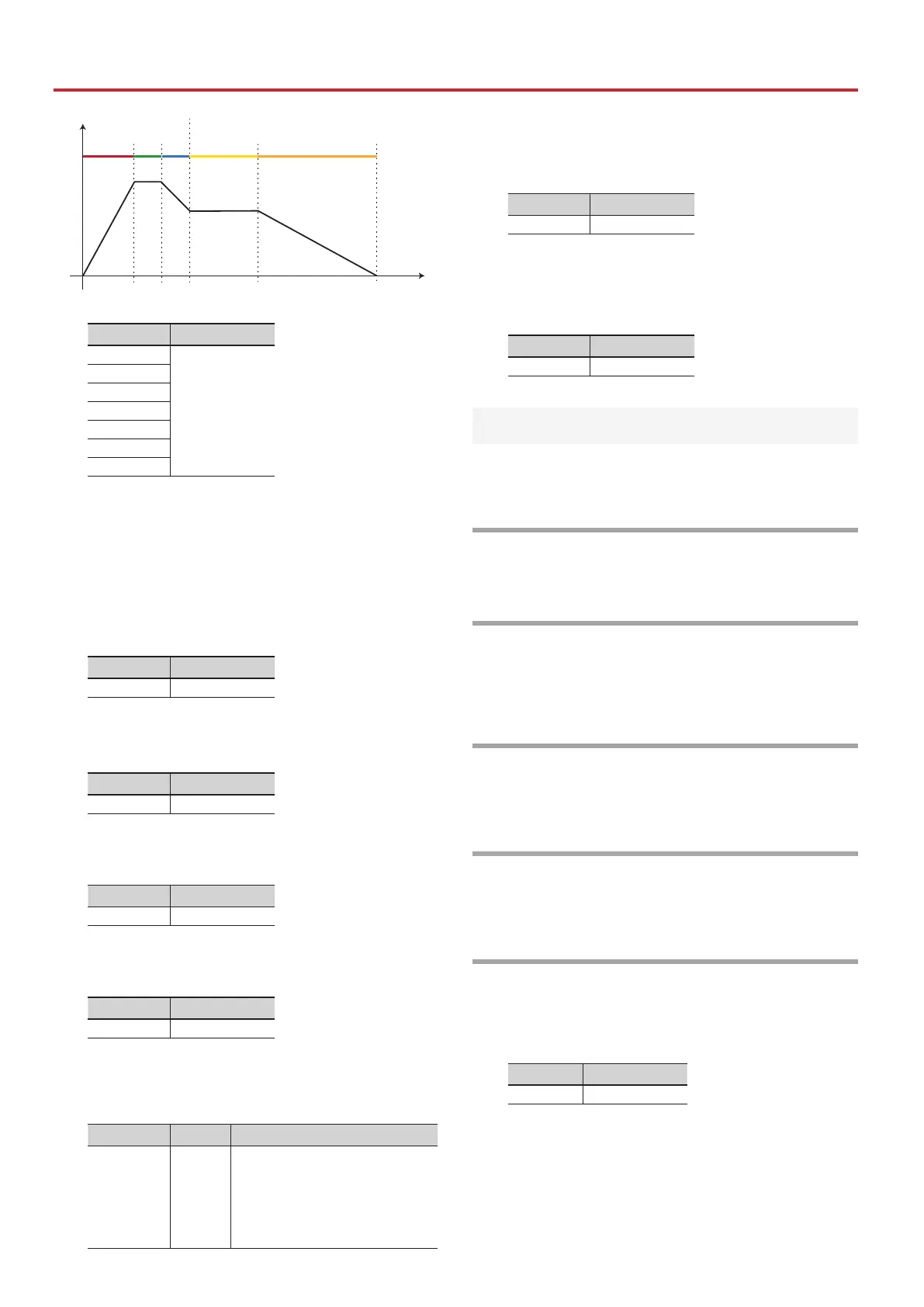Dexibell VIVO S2 handleiding
Handleiding
Je bekijkt pagina 42 van 84

42
Personalizing Your Sounds
Attack
Decay
Sustain ReleaseHold
Key Released
AMPLITUDE
t
Key Pressed
Parameter Setting
Attack
-64 ~ 0 ~ +63
Hold
Decay
Sustain
Release
Cuto
Resonance
The envelope (Attak, Hold, Decay, Sustain and Release) aren't
limited to controlling just volume (amplitude) but, in some
instruments as Strings, Pad, Choir and Synth, it controls some lter
parameters such as Cuto and Resonace. You can determine the
frequency at which the lter starts working (Cuto) and how much
it 'boosts' the frequencies around the cuto frequency.
Ride
This parameter increase or decrease the volume of Ride Cymbals
sound contained in the 'Ac. Bass&Ride' tone.
Parameter Setting
Ride -64 ~ 0 ~ +63
Amp noise
This parameter simulates the noise of the bass amplier.
Parameter Setting
Amp noise -64 ~ 0 ~ +63
String noise
This parameter simulates the resonance of the bass strings.
Parameter Setting
String noise -64 ~ 0 ~ +63
Key Noise
This parameter simulates the noise of Saxophone Key.
Parameter Setting
Key noise -64 ~ 0 ~ +63
Polyphonic
This parameter becomes useful when you use some solo
instruments like ute, violin, saxophone, trumpet and accordion.
Parameter Setting Explanation
Polyphonic
Low, High,
Last, Poly
Low - The part becomes monophonic and
play the leftmost note you played.
High - The part becomes monophonic and
play the rightmost note you played.
Last - The part plays monophonic.
Poly - The part plays polyphonic.
Blow
Blowing is possibly the most important part of any woodwind
instrument. This parameter adjusts the amount of blowing in a ute
sound.
Parameter Setting
Blow -64 ~ 0 ~ +63
Pluck
This parameter is used to emphasize the sounds of 'Pedal Bass' e
'Pedal DoubleBs'. It works to emphasize the attack phase of the
sound.
Parameter Setting
Pluck -64 ~ 0 ~ +63
TW Organ Sound Parameters
Through these parameters it is possible to change the type of organ and
many parameters associated with it.
Organ Type
Use this parameter to change the organ type: TW1, TW2, FARF, VX and PIPE.
For details see "Selecting Various Organ Types" (p. 26).
Percussion
This eect was designed to emulate the percussive sounds of the harp,
xylophone and marimba. It's the classic crisp attack unique to the vintage
organ.
For details see "Adding Harmonic Percussion" (p. 27).
Vibrato/Chorus
The vibrato and chorus system consists of six settings, V1, V2, V3, C1, C2
and C3 (i.e., 3 vibrato and 3 chorus).
For details see "Draw-faders MIDI Controls" (p. 76).
Overdrive
This is the typical eect of vacuum tube amplier and it is achieved by
'overdriving' the valves.
For details see "Adding Overdrive Eect" (p. 28).
Organ Common
Volume
This parameter reduce the volume of the tonewheel. When you set
the 'Soft' value the volume of the tonewheel became slightly softer
in volume and equalization.
Parameter Setting
Volume Normal, Soft
Leakage
In the vintage electro-mechanical organs, sometimes the signal
from adjacent tonewheels causes pickups to overhear tonewheels
other than their own. This noise, originally considered to be a
defect, grew to be an integral part of the electro-mechanical organ
sound. Use this parameter to modify the amount of leakage.
Bekijk gratis de handleiding van Dexibell VIVO S2, stel vragen en lees de antwoorden op veelvoorkomende problemen, of gebruik onze assistent om sneller informatie in de handleiding te vinden of uitleg te krijgen over specifieke functies.
Productinformatie
| Merk | Dexibell |
| Model | VIVO S2 |
| Categorie | Niet gecategoriseerd |
| Taal | Nederlands |
| Grootte | 17107 MB |



